
TARGET 160113
THE DKR-1000
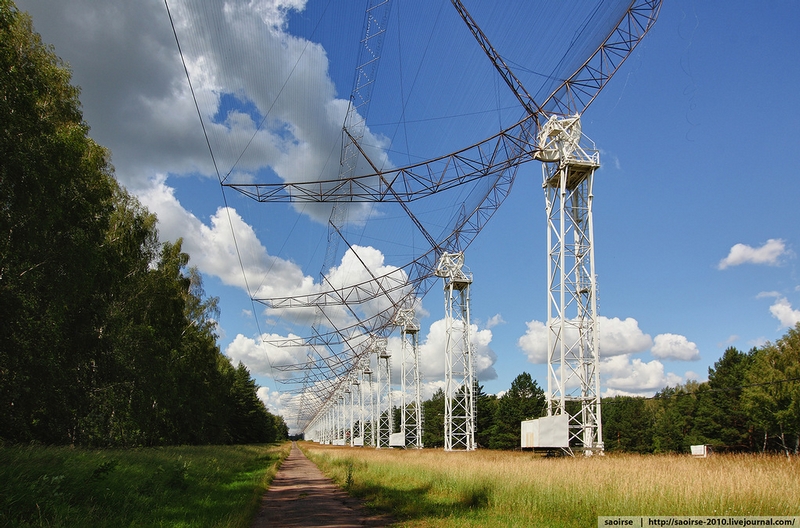
Stars give off light. We all know that. We can go outside at night and look up to see them. But they also give off other forms of radiation that we cannot see with our eyes. Light, after all is only about 35 ten thousanths (0.0035%) of the radiation that surrounds us every day. The rest can only be picked up by special equipment, such as your car radio, which can pick up local music stations, and your cell phone, which can pick up signals from cell-phone towers.
Just like the light from stars can tell us a lot about them the other radiation we can't see can tell us proportionatly more.
But this is one place where size definitely matters. All radiation, light included, spreads out over distance and gets weaker and weaker the farther away you are from its source. Your cell phone has an antenna that is only a few inches long, and can be hidden inside the phone, itself. So, you have to be within range of cell towers to get a signal. Your car radio has an antenna that is normally about a yard long, and it will pick up signals from nearby cities. The stars are very, very far away, and that is why astronomical telescopes have such large mirrors and radio telescopes have to be so large, as well. So, let's say that you want to pick up signals from stars on the other side of our galaxy or even to look at a single star in another galaxy. You're going to need one huge antenna.
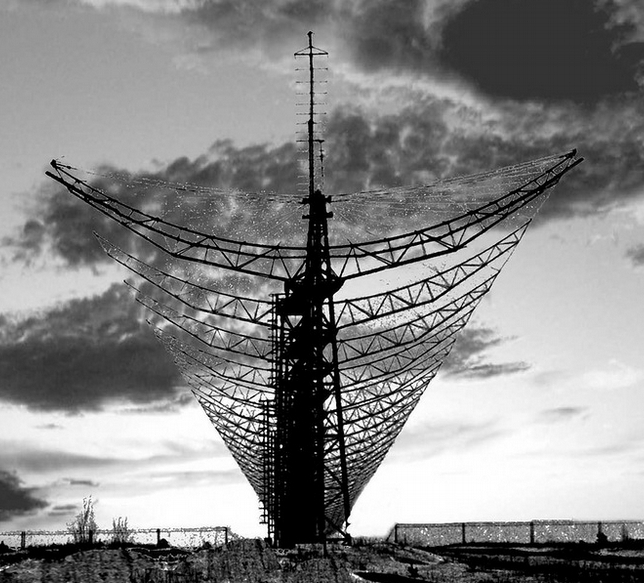
One fourth of the antenna
This is the DKR-1000 radio telescope antenna, located in Puschino, Russia, just 130 Km (80.7 miles) of Moscow. It is the largest meter-frequency radio telescope in the world. The picture above looks down one north/south arm of the antenna. In the background you can see two more of the arms of the antenna stretching out to the East and West. Each arm is 1/2 kilometer (3/10 of a mile) long.
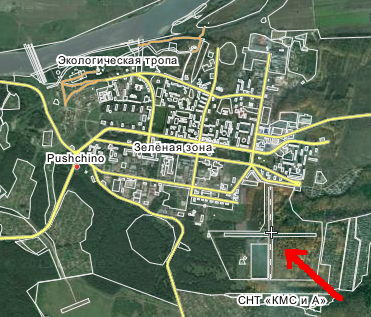
The city of Puschino
The map above (courtesy of wikimap.org) is the city of Puschino (major streets in yellow), showing the relationship of the DKR-1000 to the city.
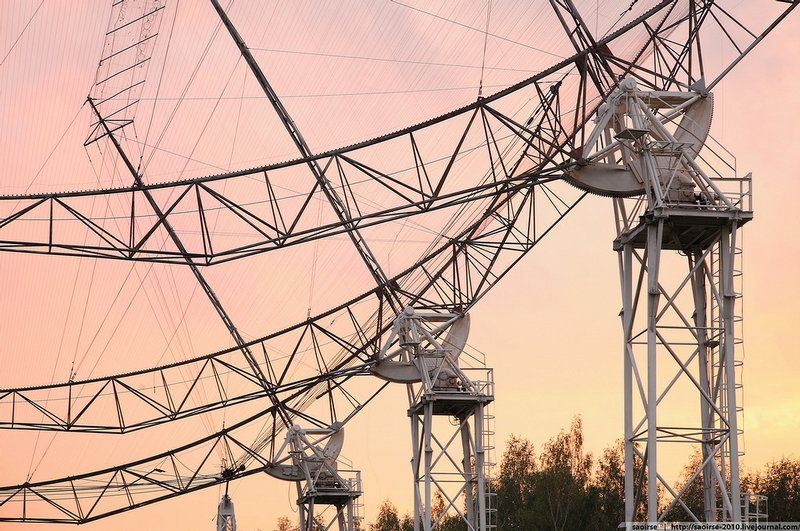
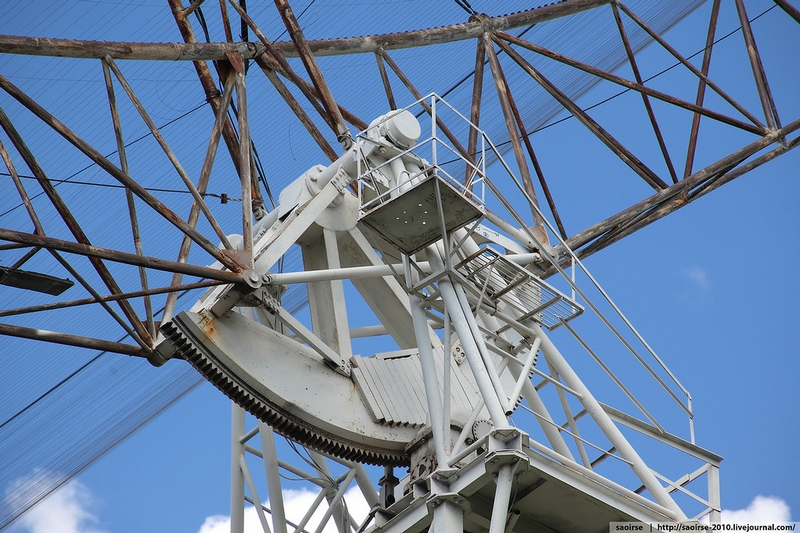
How the antenna is aimed at a star
It is so large that it naturally cannot be moved around to aim it at different parts of the sky, so each of the towers on the north/south arms has a rocker assembly that tilt those antennas to the east and west and the east/west towers can rock tilt their antennas to the north and south. The only time all of the antenna can be used on the same star is when it is directly overhead. Any other time, either the N/S arms or the E/W arms must rock their antennas in its direction to receive signals, So, only half of the antenna array can usually be used at any one time. from it.

All the rockers must point toward the exact same star
Since the actual antenna is the wires between the towers, all of the rockers along the 1 km length must point to exactly the same spot in the sky, with zero variation. The rockers are naturally computer controlled and even the slightest variation caused by wind or other problems must be corrected. The width of a single star in the sky is about the same as a penny would look to you at 10 miles away.
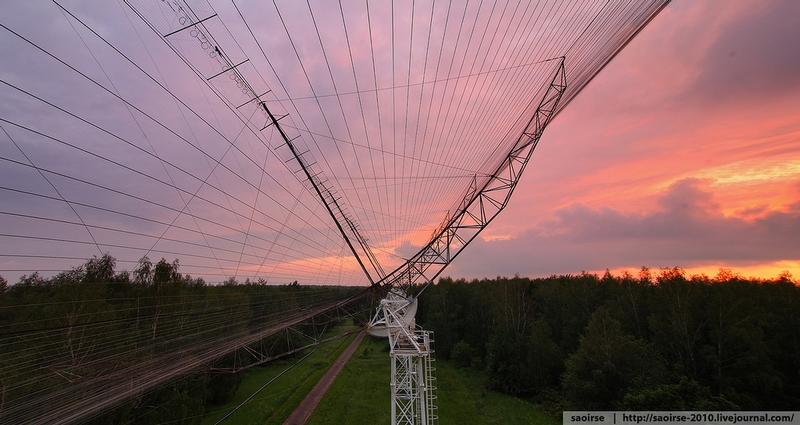
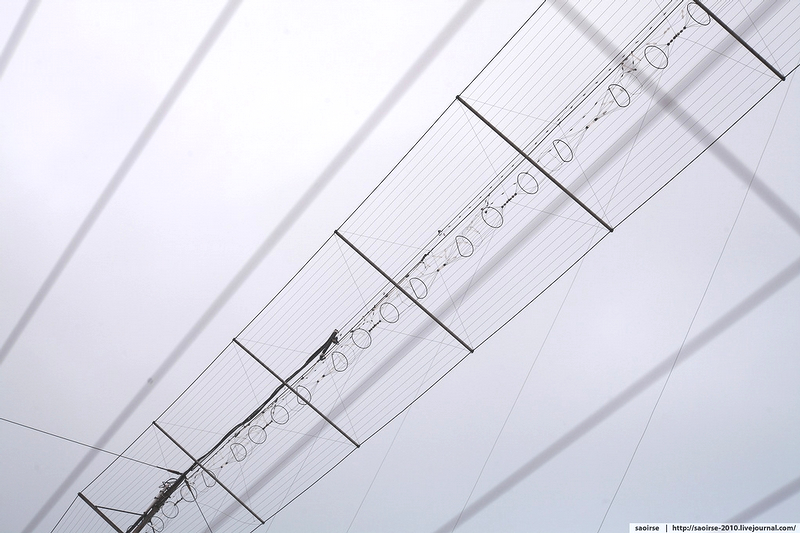
The wires are the actual antenna
The wires which make up the antenna consist of two parts: The wires you see in the top picture, above, reflect the signal and focus it onto the actual antenna wires shown in the 2nd picture. All these wires must remain completely tight so they will not vary. Therefore, any aiming of all the rockers must be done very slowly, and corrections made by the microsecond, to prevent any stretching or pulling on the antenna wires that could so easily break over the kilometer distance.
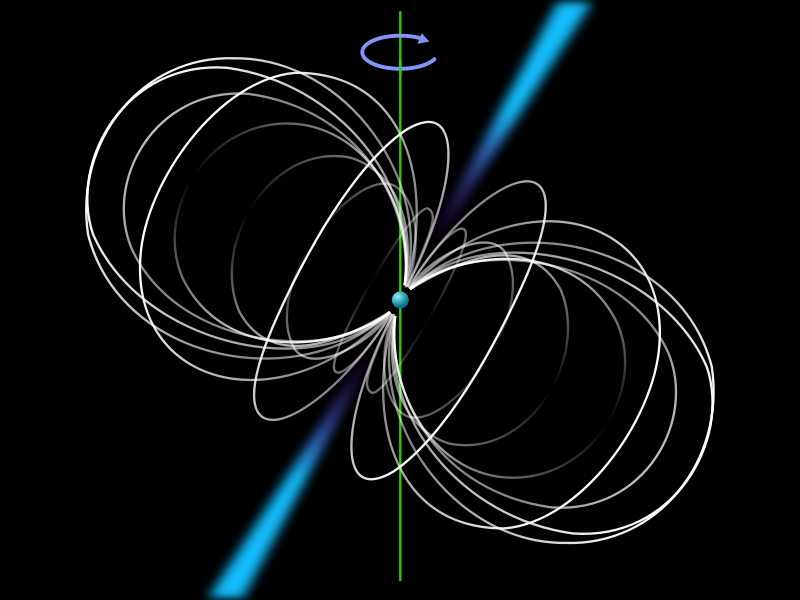
A pulsar star
There are stars in the universe, some the size of our sun, that rotate so fast that they may make a complete rotation in a few seconds. They are called "pulsars" because their fast spin causes them to appear to pulse the light emitted from them. These stars are so dense that a single spoonful of their material weighs billions of tons. The radiation given off by that much weight spinning that quickly is naturally much stronger than that given off by other stars, and some of them give off radiation that could even affect life on Earth, if it were to hit us. Luckily, their magnetic poles are also proportionatly stronger, so the radiation that would be dangerous to us is focused at its poles and shoots in directions that do not normally let it hit us. But, since a pulsar also wobbles around its axis, such radiation can be aimed at us now and then. The DKR-1000 is mainly used these days to study those stars, their radiation, and to pass that information on to the biological studies researchers at the Russian Academy of Sciences, also in Puschino. Since the stars it studies are also so dense, it collects information about states of matter that could not be duplicated in any laboratory on Earth.
The following video is an excerpt from a Russian TV program, "The Real Russia". Although it is in Russian, it has English subtitles. You will need to move your cursor out of the viewing screen in order to see the subtitles. It is 1 minute, 50 seconds long.
You may want to move the volume slide lower before hitting the Play arrow. The volume level is not pre-programmable.
FEEDBACK MAP
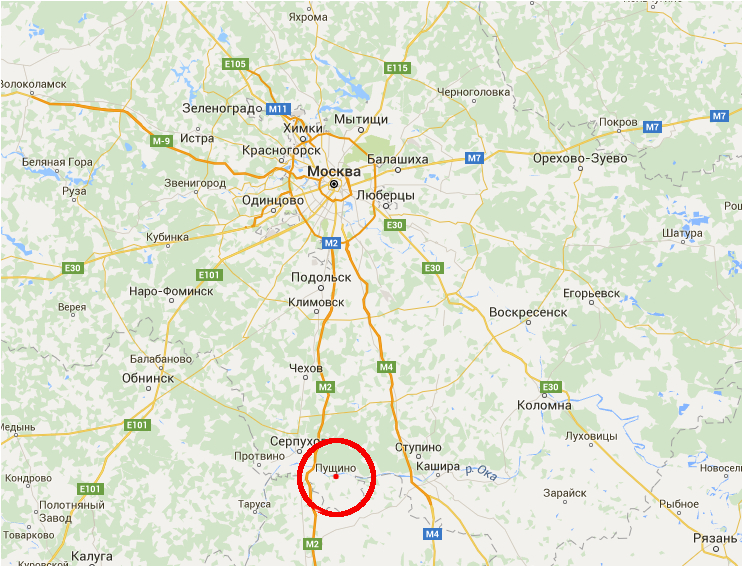
If you got impressions for which this feedback is insufficient, more information,
pictures and videos can be found at the following web sites:
The Observatory's home page (in Russian, but translates nicely)
Wikipedia
English Russia web site
Physics-Uspeki (statistical information)
Contact information